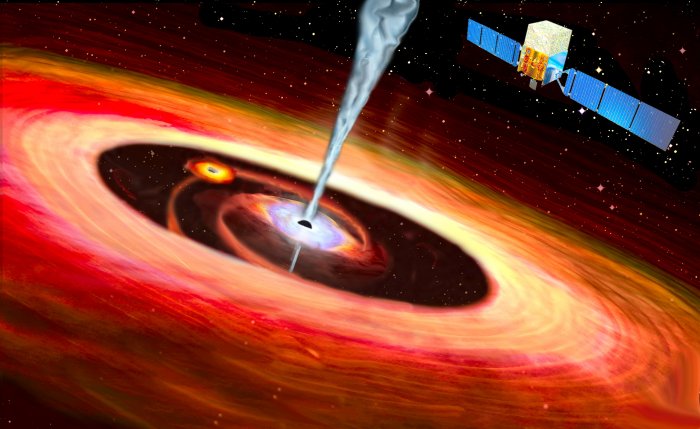MessageToEagle.com – First now, after 10 years of observations, scientists have confirmed a two-year cycle in the gamma-ray brightness of a blazar, a galaxy powered by a supermassive black hole.
“This is the first time that a gamma-ray period has been confirmed in an active galaxy,” Stefano Ciprini, a researcher at the INFN Tor Vergata division of the Italian Space Agency’s Space Science Data Center in Rome, said in a press release.
“The gamma-ray period is also seen in other wavebands, including visible light, and additional X-ray and radio data hint at similar brightness peaks.”
Some of the matter falling into the blazar, named PG 1553+113, forms a jet of particles that radiates gamma rays, the highest-energy form of light, almost directly toward Earth.
A pair of supermassive black holes in the heart of the blazar is the most tantalizing possibility. In this scenario, one of the supermassive black holes would be emitting the gamma rays in a jet, and the direction of this jet “wobbles” due to interactions with its companion black hole.
This would make PG 1553+113 a prime target for a future space-based gravitational wave detector, such as the European Space Agency’s Laser Interferometer Space Antenna (LISA), set for launch in the 2030s, or by the Square Kilometre Array (SKA), a giant radio telescope, which is under construction in South Africa and Australia.
“This result has been achieved after 10 years of continuous monitoring by Fermi’s Large Area Telescope (LAT), said Sara Cutini, a researcher at the Italian Institute for Nuclear Physics (INFN) in Perugia.
“We first saw a hint of a periodic modulation in 2014, when we produced detailed analyses of LAT data. Now we can say with certainty that this long-term behavior is real.”
MessageToEagle.com







